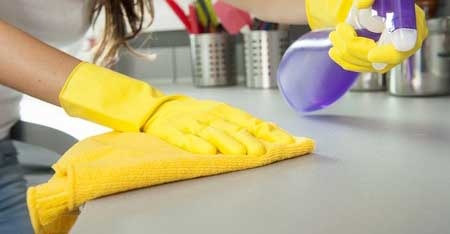As discussed in our previous blog article using ready-to-use surface wipes are a great alternative to traditional bucket methods as they have increased compliance with Infection Control practices and have resulted in increased staff productivity[i]. This has resulted in 1) potential cost savings 2) Productive staff and 3) Better inventory control & improved cash flow. The question now is, how do you choose the right surface disinfectant wipe?
There are many factors which should be taken into consideration in regards to choosing the right wipe. Is the wipe right for every surface in your practice? What is the toxicity level? Is it dermatologically friendly to use without gloves? Does the wipe clean and disinfectant and offer a one-step solution? These are just some questions that may be considered by healthcare professionals in when choosing the right wipe. To assist you in making your choice and expanding your knowledge we will discuss below the characteristics in which oral healthcare professionals should consider when choosing a surface wipe.
Surfaces and materials
Preserving the longevity of the surfaces and materials within your practice is highly significant. There have been studies[ii] conducted were specific disinfectant/detergent wipes have been using organic solvents which are harsh to the surfaces and materials being wiped. Surfaces and materials such as plastic can be easily damaged by the prolonged use of organic solvents[iii] because they include high concentrations of Isopropyl alcohol, Ethanol etc. Dental surgeries should opt for a gentle/sensitive formula of disinfectant/universal wipe to use on ‘sensitive’ surfaces (surfaces such as plastic, rubber and metal[iv]).
A current issue[v] has emerged where expensive equipment has been damaged through the use of strong disinfectant wipes. Healthcare workers using rubbing alcohol on plastics[vi], metals or rubber has the potential to cause corrosion, peeling and other damage. Therefore, healthcare practitioners are asked to be mindful of which wipes are used on ‘sensitive’ surfaces and materials, and only use highly concentrated organic solvents (hydrogen peroxide, rubbing alcohol) on benchtops and less likely prone surfaces. Not abiding by these actions may have further damage to your surfaces and equipment, which in the long run will cost you a significant amount of money. It is highly recommended to check with your equipment manufacturer before using any type of wipe.
Contact time
The contact time for all disinfectant/detergent wipes should always be considered as this determines the range of micro-organisms killed. Some wipes will have a low contact time (60-90 seconds) which will kill approximately 70% of micro-organisms on the surface (excluding spores). As a practice, you have to determine which organisms you are targeting to eliminate, in accordance with your patient population. This would generally be a wide range of bacterium (including superbugs: MRSA), fungus (Candida albicans) and viruses (Hepatitis B & C, Norovirus, Influenza).
Universal Clinell wipes range is an example of a product that kills a wide range of bacteria, viruses, fungi and mycobacteria less than 5 minutes. You can read more in regards to the range of micro-organisms here[vii].
Scent/smell
Some wipes can be effective and have a great kill range, however if the scent or smell is not appealing to your patients or is offensive, you may have some issues. Choosing a wipe which has a low and subtle scent is the best option. Universal Clinell wipes have a slight (yet very subtle) green tea scent.
Composition of the wipe material
The composition of the wiping material is extremely important as some materials may deplete the active chemical ingredients within the wipe itself. The most common event of this risk occurring is when you are using your surgeries’ disinfectant to add to a container of dry wipes. Purchasing wipes pre-soaked is the best option.
Design
Is the wipe you are purchasing in a canister with a flip-top resealable lid? Canisters that are designed this way, conceal the next wipe, and therefore reduce the risk of decreasing the potency and functionality of the next wipe.
Attention must also be paid to the design of universal and detergent wipes. These wipes should have a design mechanism to collect debris easily. Usually this type of design mechanism is visible in the wipe – for example, some wipes (such as Clinell, Clinicare and Speedy Clean Wipes) have small holes to allow for debris to be captured efficiently, making it easier to clean and use one wipe to remove all debris.
In considering all the above characteristics in choosing a disinfectant/detergent wipe, most customers choose Clinell Universal wipe range, which offer a one-step solution for the surgery. The wipe material, design, formula, contact time, and scent reflect the characteristics mentioned above and offer an excellent alternative to the two-step processes discussed in our previous blog. A Universal wipe reduces confusion as to what wipe to use when and improves inventory management in the practice. Check out our eStore for the full range here.
REFERENCES
[i]http://www.vericlean.com.au/images/pdf/whitepapers/I_Disinfectant_Wipes_Value_vs_Std_Cloths_Weimken_AJIC_2014.pdf
[ii] https://link.springer.com/chapter/10.1007/978-1-4615-9059-0_3
[iii] http://europepmc.org/abstract/med/2032578
[iv] http://www.juniordentist.com/corrosion-in-dentistry.html
[v]https://www.gov.uk/drug-device-alerts/medical-device-alert-detergent-and-disinfectant-wipes-used-on-reusable-medical-devices-with-plastic-surfaces-risk-of-degrading-plastic-surfaces
[vi]https://www.hospitalhealth.com.au/content/clinical-services/sponsored/reducing-the-risk-of-surface-damage-compatibility-is-crucial-49429001#axzz5BejOHEB7
.png)

